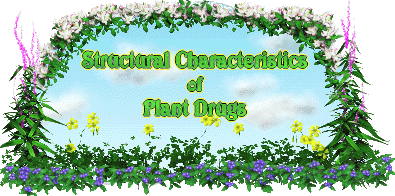




Morphological and Anatomical Arrangement; Official Plant Drugs Arranged According to Structural Characteristics (Phanerogams, Cryptogams, Abnormal Growths Caused by Parasites, Non-Cellular Plant Drugs Derived from Cell-Contents and Secretions); Official Plant Drugs Derived from the Vegetable Kingdom (Phanerogams, Cryptogams, Abnormal Growths Caused by Parasites, Non-Cellular Plant Drugs Derived from Cell-Contents and Secretions); Organoleptic Evaluation (Occurrence on the Market, Underground Plant Parts, Barks, Woods, Leaves and Flowers, Fruits and Seeds, Exudates, Extractives, Other Plant Drugs, Odor, Taste and Color); Official and Unofficial Plant Drugs Arranged According to Prominent Physical Properties, and Subdivided by Odor and Taste (Roots, Rhizomes, Tubers, Bulbs and Corms, Twigs and Branches, Woods, Barks, Leaves, Leafy Tops, Herbs and Whole Plants, Flowers, Bulbs and Petals, Fruits, Seeds, Cellular Plant Drugs and Products from Fragments of the Plant, and Non-Cellular Plant Drugs Derived from Cell-Products, Including Secretions).



Structure of Roots, Rhizomes and Stems (Cryptogams or Acrogens, Parenchymatous and Prosenchymatous Cells, Monocotyledonous and Dicotyledonous Plant Drugs, Vascular Cryptogam or Phanerogam, Transverse Sections, Fibrovascular Bundles, Distribution and Relationship of Fibrovascular Bundles, Endogenous and Exogenous Arrangements of Stems, Open and Closed Fibrovascular Bundles, Description of the Fundamental Structural Pattern of Dicotyledons); Morphological Classification of Underground Organs (Roots and Rhizomes).



Morphological Classification of Underground Organs --- Rhizome or Rootstalk (Occurrence, Size and Shape, Surface Markings, Fracture, Internal Appearance, Odor and Taste); Monocotyledonous Rhizomes (With Rootlets); Dicotyledonous Rhizomes with Rootlets (Including Ducts or Oil Cells); Dicotyledonous Rhizomes with Rootlets (Without Ducts or Oil Cells)Monocotyledonous Rhizomes Without Rootlets (Elongated); Monocotyledonous Rhizomes Without Rootlets (Short and Compact); Exogenous Rhizomes Without Rootlets (Long); Dicotyledonous Rhizomes Without Rootlets (Short and Compact); Structural Similarities Between Rhizomes and Roots; Histology (Microscopical Characteristics).



Morphological Classification of Underground Organs---Root or Radix (Occurrence, Size and Shape, Surface Markings, Fracture, Internal Appearance, Odor and Taste); Monocotyledonous (Endogenous) Roots; Dicotyledonous (Exogenous) Woody Roots (With Thin Bark); Woody Roots (Thick Bark with Ducts); Histology (Microscopical Characteristics).

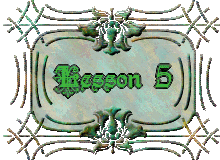

Morphological Classification of Above-Ground Organs (Stems, Herbaceous Stems, Woody Stems, Sliced Bulbs, Corms, Sliced Corms, Tubers, Twigs (Branches), Leafy Twigs, Scaly Twigs, Naked or Leafless Twigs, Parts of Branches, Piths, Woods, Cross-Sections, Tangential Sections, and Radial-Sections); Histological Structure of Stems (Appearance and Examination).

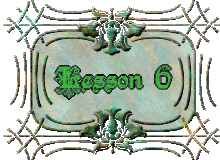

Morphological Classification of Above-Ground Organs---Barks or Cortices (Occurrence, Outer Surface Markings, Inner Surface Markings, Transverse Surface, and Fracture); Structural Characteristics of Barks (Epidermis, Primary Cortex, Endodermis, Pericycle, Phloem, Cork Cambium, Middle and Inner Bark, and Coarse Appearance of Bark); Methods of Classification; Bast with Isolated Bast Cells; Bast Radially Striated; Bast Tangentially Striated; Bast Quadratically Striated; Bast Without Striation; Rasped Barks; Histological Structure of Whole Barks (Microscopical Examination).



Morphological Classification of Above-Ground Organs (Leaves or Folia, Leaflets or Foliola, and Leaf-Buds); General Morphology and Activities of the Leaf (Position and Arrangement of Leaves, Venation, General Forms and Outlines of Leaves, Marginal Indentations, Leaf Surface and Texture); The Study of Leaf Plant Drugs (Occurrence, Duration or Origin, Form, Outline, Leaf Base, Petiole, and Lamina); Simple and Compound Coriaceous Leaves; Simple Herbaceous Leaves; Leaf-Buds; Anatomy of the Leaf; Histology (Microscopical Examination); The Distribution of Tissues in Leaves.



Morphological Classification of Above-Ground Organs---Herbs or Herbae (General Appearance, Shape of Aerial Stems, Manner of Division, Type of Leaves, Flower or Fruit, Color, Odor and Taste); Structure of the Aerial Stem; Botanically Recognizable Herbs or Whole Plants.



Morphological Classification of Above-Ground Organs---Inflorescences and Flowers (or Flores); Structural Characteristics of Flowers (Types of Flowers, The Composite Flower, and Inflorescences or Anthotaxy); The Study of Flower Plant Drugs (Occurrence, Type of Inflorescence, Shape, Type of Flower, Color, Parts Present [Whether in Bud, or Partly or Fully Opened], Odor and Taste); Racemose and Cymose Inflorescences; Unopened Compound Flowerheads; Expanded Compound Flowerheads; Unopened Single Flowers; Opened Single Flowers; Corollas and Stigmas; Histology (Microscopical Examination of Pollen Grains, Smooth-Walled Pollen Grains, Spiny-Walled Pollen Grains, Stigma Papillae, Powdered Insect Flowers, Open Insect Flowers, and Powdered White Daisies).

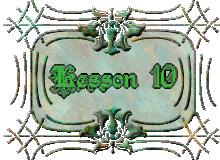

Morphological Classification of Above-Ground Organs---Fruits (or Fructi); General Morphology (Occurrence, Type, Shape, External Markings, Texture and Color, Internal Appearance, Number of Cells, Seed Characteristics, Odor and Taste); Major Groupings of Fruits (Simple, Aggregate and Collective); Description of Fruit (Class, Shape and Dimensions, Adhesion (Superior or Inferior), Dehiscence (Dehiscent or Indehiscent), Pericarp, Placentation and Seeds); Fresh Fleshy Fruits (Berries); Fresh Stone Fruits; Dried or Prepared Spurious Fruits; Dry Fruits; Fleshy Fruits or Berries (Dried or Prepared); Druples (Dried or Prepared); Parts of Fruits; Histology (Microscopical Examination).



Morphological Classification of Above-Ground Organs---Seeds (or Semina); General Morphology (Occurrence, Group, Shape, External Surface, Internal Appearance, Odor and Taste); Whole Seeds; Cotyledons (Seed-Leaves); Arilli (Adventitious Seed-Coats); Histology (Microscopical Examination).

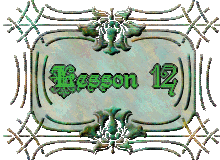

Morphological Classification of Miscellaneous Plant Drugs and Products; Vegetable Plant Drugs with Cellular Structures (Trichomes, Pith, Spores, Glands and Excrescences); Parts of Plants Not Readily Recognizable as Such (Cut or Otherwise Altered); Trichomes (Plant Hairs); Vegetable Plant Drugs Without Cellular Structure; Animal Drugs (Non-Cellular Animal Substances, and Liquid Amorphous Animal Substances); Cryptogamous Plant Drugs; Miscellaneous Products (Kieselguhr or Diatomite, Prepared Chalk, Gelatin, Leech, Cantherides, Lac or Shellac, Isinglasss, Ambergris, Musk and Civet).
